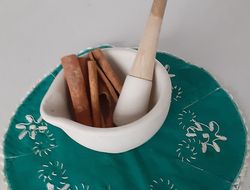Cinnamon: cause for concern or not?
Published: April 03, 2020
Cinnamon, a popular culinary spice, is the dried inner bark of species of the genus cinnamomum.
Commercially available cinnamon comes from four species:
- Cinnamomum verum (C.Zeylanicum (Sri Lankan/Ceylon))
- Cinnamomum cassia (C. Aromaticum (Chinese))
- Cinnamomum Burmannii (Indonesian/Java)
- Cinnamomum Lourieroi (Saigon/Vietnamese).
Ceylon cinnamon is also referred to as “true” cinnamon while Chinese cinnamon is more commonly referred to as cassia.
Cassia cinnamon is the most common commercially available form.
The various cinnamon species differ in the levels of several main constituents: cinnamaldehyde, cinnamic acid, coumarin, linalool, eugenol, caryophylene, polypheolpolymers, and proanthocyanids.
Cinnamon forms include sticks and ground spice powder.
Historically, cinnamon has been used in an array of food dishes and alcoholic beverages, breads, pastries, cookies, and other baked goods.
Cinnamon can also be added to tea, coffee, desserts, breakfast cereals, and chocolates and is a popular spice added to a variety of Christmas specialty items such as mulled wine and gingerbread.
Cinnamon is also used in the cosmetic and fragrance industry.
Cinnamon has also historically featured in traditional medicine to treat infections, respiratory problems, gastrointestinal distress, nausea, loss of appetite, arthritis, dermatitis, toothache, colds, menstrual irregularities, and healing wounds.
More recently the following have been added to suggested health benefits of cinnamon: improved glucose metabolism and insulin activity, improved lipid levels and blood pressure, protection against free radical damage and inflammation, and may act as a muscle relaxant.
While consumption of cinnamon is thought to be safe when used as a food in amounts up to 6 g/day, consumptions in excess of this amount may have adverse side effects such as:..link to the full article to learn more.

